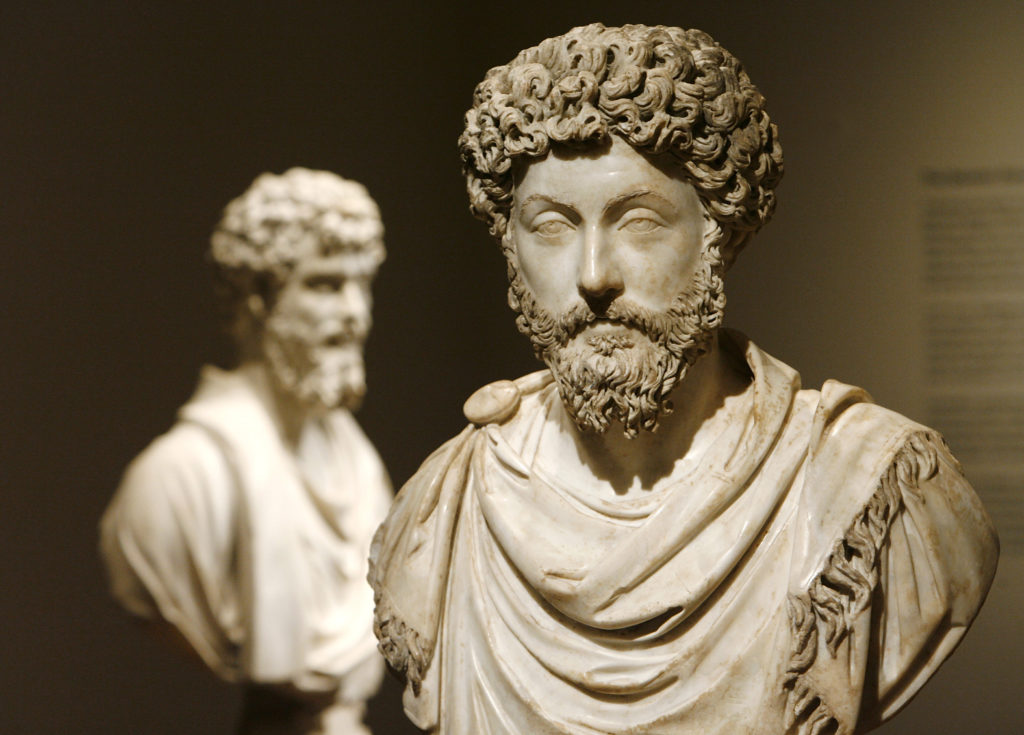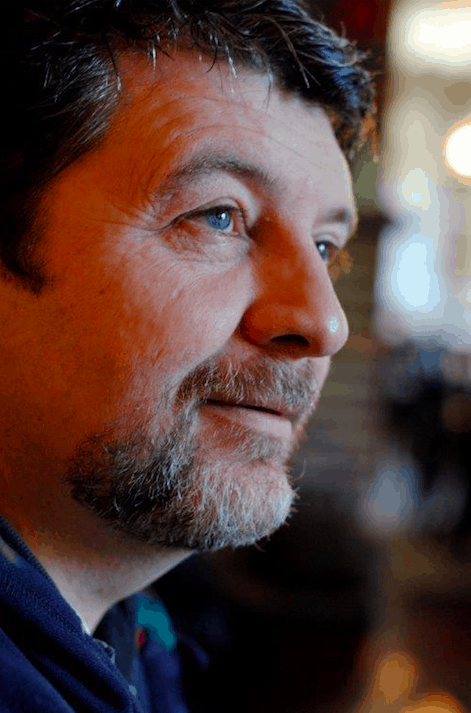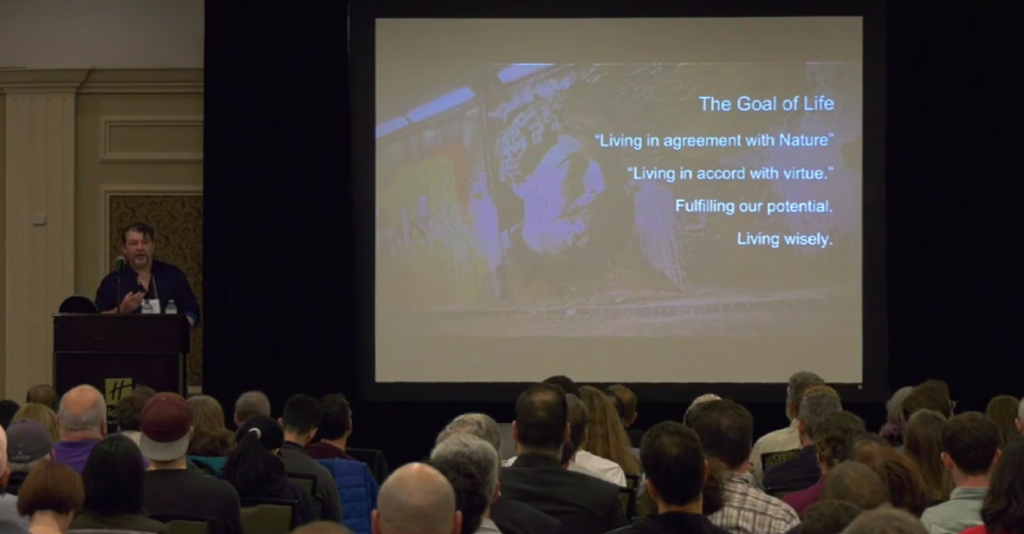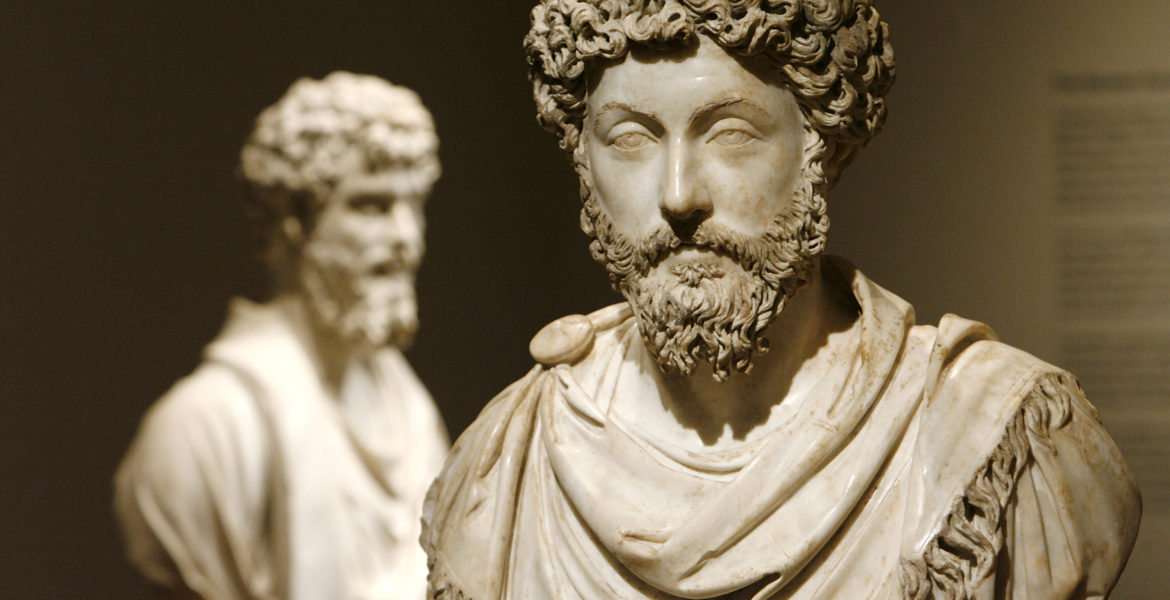Democracy, medicine, philosophy, science, technology, athleticism, gastronomy, art... all these are constructs that people today still strongly connected to ancient Greek culture, where many of these concepts and practices were born and developed in highly sophisticated ways. However, we don’t often relate ancient Greek philosophy with modern psychology; and many of us are not aware that Socrates‘ teachings on Stoicism actually form the basis of Cognitive Behaviour Therapy (CBT), an effective modern tool used widely today to treat psychological issues. It has proven so effective that the National Health System offers it free in the UK.


Visiting Athens for the first time from his home in Canada (although he is Scottish by nationality), Donald Robertson, a CBT Therapist and the author of six books, the latest titled ‘How To Think Like A Roman Emperor’, has dedicated the last 15 years of his career combining CBT with Stoicism. He is the founding member of a non-profit organisation called Modern Stoicism, run by a team of philosophers, classicists, and cognitive psychotherapists. Annually, they offer Stoic Week, a free online course every year that this year had over 8,000 participants from around the world. They also run a one-month intensive course called Stoic Mindfulness and Resilience Training (SMRT).

“CBT is the dominant evidence-based form of psychotherapy today,” Roberston says. “The pioneers of this approach, Albert Ellis and Aaron T. Beck, were both originally inspired by Stoic philosophy. Most importantly, both approaches are based on the shared premise that our ‘cognitions’ or thoughts or beliefs are caused mainly (if not entirely) by our underlying beliefs.”
“Once we can recognise that feelings involve beliefs then we can start questioning what exactly those beliefs are, evaluating whether they’re true or false, helpful or unhelpful, and confirm or disprove them. So the cognitive model of emotion opens up a whole new toolbox for therapists - but the Stoics knew this over two thousand years ago,” he says. However, he adds, “CBT is mainly a remedy for existing problems, such as anxiety and depression, and it’s designed to be a short-term approach, while Stoicism is a whole philosophy of life. It’s permanent, and it’s designed to be preventative as well as therapeutic – so it’s much broader in scope.”
Robertson’s successful techniques of combining Stoicism and CBT have generated a huge following globally, currently at around 45,000 individuals from all backgrounds reaping the rewards from his teachings. Stoicism has been adopted in the modern age by sportspeople, the military, psychologists and academics as well as ordinary people who find it can offer great improvements in their everyday life.

I ask Robertson what the appeal is. “Ordinary anxiety and depression have become a part of human life and even the more severe forms, the actual psychiatric disorders, are becoming increasingly common. Recent research shows that just over 50% of people in the USA now have a history (“lifetime prevalence”) of mental health problems. We used to call psychiatry “abnormal psychology” but psychological disorders have effectively become today’s normal psychology.”
“Nobody knows exactly why that’s happening; it’s probably due to a number of different factors, though. Many people today feel isolated and lack support from friends and family when it comes to coping with stressful situations. Unless they have access to a psychotherapist, individuals are increasingly forced to help themselves get through tough times. Stoicism offers methods of self-improvement and emotional resilience-building. However, it also provides a philosophy of life, which can give people a much-needed sense of meaning and direction.”
https://www.youtube.com/watch?v=nxBtS6VTWlo
So here are Robertson’s top five guidelines for using Stoicism to improve our everyday life.
-The dichotomy of control: choices vs accidents. The opening sentence of the Stoic Handbook of Epictetus says “Some things are up to us and other things are not.” Learn to clearly define your sphere of control: take more responsibility for the things that you do and learn to be more indifferent toward things that merely happen to you.
-Cognitive distancing: what you see is what you get. Perhaps the most famous Stoic quote comes a few lines later in the same book: “It’s not things that upset us but our judgments about things.” We should remember that it’s mainly our own value judgments that shape our emotions rather than the external events that befall us.
-Objective representation: cut the drama. Stoics were known for speaking concisely (Laconically) and describing things in a matter-of-fact way, without emotive rhetoric or strong value judgements – Epictetus says just stick to the facts without adding an exclamation like “Oh no!”
-Premeditation of adversity: guard yourself cooly. The Stoics were known for picturing setbacks in advance in order to rehearse coping with them, which people sometimes call “negative visualisation” today – although you have to be careful to do this patiently and to view the event with indifference rather than as something genuinely negative.
-The View from Above: see the forest not the tree. Sometimes also described as a “comprehensive representation”, the Stoics encourage us to view upsetting events within the bigger picture. We’re to picture them from high above like the gods looking down from Mount Olympus, or we can go even further and imagine our current predicament as a tiny speck in relation to the whole of space and time.
Donald Robertson’s website:
Modern Stoicism:
*Testimonial
"I completed the questionnaires for Stoic Week 2018. Life satisfaction score: low. Flourishing score: very low. Stoic attitudes and beliefs: none. Still, I was determined to start living like a Stoic.
Thus, I began. Every morning, before sunrise, I walked outside and, under the stars and sky, contemplated how small and insignificant I was. At midday, I strolled through a cemetery, imagined my imminent death and how I would soon be forgotten. At night, I reflected on my day, reminded myself that I have limited time and let that determine what I would do, say, and think the next day; if it came. Stoic practice can seem a little morbid, but you’d be surprised how all this death contemplation instantly helps clarify what I can control and what I ought to be doing.
At the end of the week, my satisfaction and flourishing scores were higher, and I had adopted some serious Stoic attitudes. But this is no miracle cure. I’d studied the Stoics at university and in my 20s, and then promptly forgot all about them years later when I really needed them.
The thing about Stoic philosophy is that you can’t do it all from an armchair. You’ve got to do some hard work. Apart from reading and thinking, you’ve got to meditate, you’ve got to write things down and memorize maxims to help when you face an unexpected crisis, and you’ve got to go out and dialogue with other human beings. And, then, you’ve got to get up and do it all again, every day, throughout the day. You’ve got to live the philosophy."
Kathryn Koromilas is a writer who leads the Stoic Writing Scene and The Stoic Writer, and Vlogged about participating in Stoic Week 2018.
For reference, the embedded links above are:
Kathryn Koromilas – kathrynkoromilas.com
Stoic Writing Scene - facebook.com/groups/stoicscene
The Stoic Writer - thestoicwriter.com/
Vlog - youtube.com/KathrynKoromilas?sub_confirmation=1


